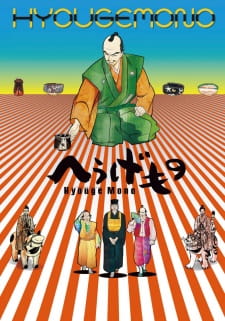Alternative Titles
Synonyms: Hyougemono
Japanese: へうげもの
Information
Type:
TV
Episodes:
39
Status:
Finished Airing
Aired:
Apr 7, 2011 to Jan 26, 2012
Premiered:
Spring 2011
Broadcast:
Unknown
Licensors:
None found, add some
Studios:
Bee Train
Source:
Manga
Demographic:
Seinen
Duration:
25 min. per ep.
Rating:
R - 17+ (violence & profanity)
Statistics
Ranked:
#5562
2
based on the top anime page. Please note that 'Not yet aired' and 'R18+' titles are excluded.
Popularity:
#4149
Members:
28,796
Favorites:
322
Available AtResources | Recommendations
|




















